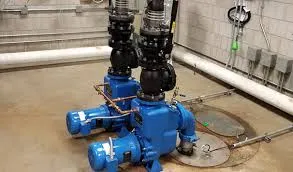Sinhala
- Afrikaans
- Albanian
- Amharic
- Arabic
- Armenian
- Azerbaijani
- Basque
- Belarusian
- Bengali
- Bosnian
- Bulgarian
- Catalan
- Cebuano
- Corsican
- Croatian
- Czech
- Danish
- Dutch
- English
- Esperanto
- Estonian
- Finnish
- French
- Frisian
- Galician
- Georgian
- German
- Greek
- Gujarati
- Haitian Creole
- hausa
- hawaiian
- Hebrew
- Hindi
- Miao
- Hungarian
- Icelandic
- igbo
- Indonesian
- irish
- Italian
- Japanese
- Javanese
- Kannada
- kazakh
- Khmer
- Rwandese
- Korean
- Kurdish
- Kyrgyz
- Lao
- Latin
- Latvian
- Lithuanian
- Luxembourgish
- Macedonian
- Malgashi
- Malay
- Malayalam
- Maltese
- Maori
- Marathi
- Mongolian
- Myanmar
- Nepali
- Norwegian
- Norwegian
- Occitan
- Pashto
- Persian
- Polish
- Portuguese
- Punjabi
- Romanian
- Russian
- Samoan
- Scottish Gaelic
- Serbian
- Sesotho
- Shona
- Sindhi
- Sinhala
- Slovak
- Slovenian
- Somali
- Spanish
- Sundanese
- Swahili
- Swedish
- Tagalog
- Tajik
- Tamil
- Tatar
- Telugu
- Thai
- Turkish
- Turkmen
- Ukrainian
- Urdu
- Uighur
- Uzbek
- Vietnamese
- Welsh
- Bantu
- Yiddish
- Yoruba
- Zulu
Telephone: +86 13120555503
Email: frank@cypump.com
දෙසැ. . 27, 2024 03:27 Back to list
Submersible Mixed Flow Pump Manufacturing Processes and Factory Insights
Submersible Mixed Flow Pump Factories An Overview
Submersible mixed flow pumps are pivotal in various industrial applications due to their efficiency in transporting fluids. These pumps operate underwater, which not only helps in minimizing noise pollution but also enhances their operational efficiency in transporting liquid, including wastewater, chemicals, and even potable water. As the demand for effective fluid management solutions increases, submersible mixed flow pump factories play a crucial role in the manufacturing and innovation of these systems.
Understanding Submersible Mixed Flow Pumps
Submersible mixed flow pumps are designed to be submerged in the fluid they are pumping. Their mixed flow design features a combination of axial and radial flow, facilitating a higher flow rate and suitable for medium to high-head applications. These pumps are particularly beneficial in scenarios where space is limited, as they are compact and easy to install.
The construction of submersible mixed flow pumps typically includes robust materials that withstand corrosion, especially when handling aggressive fluids. The impeller design and motor casing are engineered to ensure durability and long life, even in harsh conditions.
Importance of Factories in Production
Submersible mixed flow pump factories are critical hubs for innovation and mass production of these vital pumps. In these factories, skilled technicians and engineers work together to design and manufacture pumps that meet varying industrial standards. The production process involves careful selection of materials, precise engineering, and rigorous testing to ensure that the pumps not only meet but exceed performance expectations.
1. Design and Innovation Factories invest in research and development to continuously improve pump designs. New technologies, such as advanced materials and smart automation systems, play a significant role in enhancing pump efficiency and reliability. Innovations can lead to the creation of energy-efficient models that help reduce operational costs for users.
2. Quality Control Factories implement stringent quality control measures throughout the manufacturing process. Each pump undergoes rigorous testing—often simulating real-world conditions—to ensure it performs as intended. This includes checking for efficiency, durability, and resistance to wear and tear.
submersible mixed flow pump factories

3. Customization Many factories offer customized solutions tailored to specific needs of various industries. This might involve modifying pump sizes, capacities, and materials based on customer requirements and the specific characteristics of the fluids being pumped. Such flexibility is crucial in sectors like agriculture, wastewater treatment, and chemical processing.
Global Market Trends
The global market for submersible mixed flow pumps is on the rise due to urbanization and increased investments in infrastructure projects. Cities are experiencing higher demand for effective wastewater management systems, prompting municipalities to seek reliable pumping solutions. Additionally, the agricultural sector increasingly turns to submersible pumps for irrigation and water supply, further stimulating market growth.
Moreover, environmental regulations encourage the use of efficient pumps to minimize energy consumption and reduce carbon footprints. Factories that can adapt to these trends by developing eco-friendly pumps with lower energy usage are likely to gain a competitive edge.
Challenges Faced by Factories
While opportunities abound, factories face challenges, including rising material costs and the need to comply with ever-stricter environmental regulations. Ensuring sustainable manufacturing processes while maintaining cost-effectiveness is a delicate balance that manufacturers must achieve.
Moreover, competition is intensifying globally, with emerging markets entering the field. This requires established factories to innovate continuously and improve customer service to retain market share.
Conclusion
Submersible mixed flow pump factories are vital in driving the efficiency and reliability of fluid management systems. Through innovative design, rigorous quality control, and a focus on customer needs, these factories contribute significantly to various industries worldwide. As the demand for sustainable and efficient pumping solutions grows, the role of these factories will only become more crucial in the years to come, shaping the future of fluid dynamics in industrial applications.
-
Horizontal Split Case Pump with GPT-4 Turbo | High Efficiency
NewsAug.01,2025
-
ISG Series Pipeline Pump - Chi Yuan Pumps | High Efficiency, Durable Design
NewsAug.01,2025
-
Advanced Flue Gas Desulfurization Pump with GPT-4 Turbo | Durable & Efficient
NewsJul.31,2025
-
ISG Series Vertical Pipeline Pump - Chi Yuan Pumps | Advanced Hydraulic Design&Durable Construction
NewsJul.31,2025
-
ISG Series Vertical Pipeline Pump - Chi Yuan Pumps | Energy Efficient & Low Noise
NewsJul.31,2025
-
pipeline pump - Chi Yuan Pumps Co., LTD.|High Efficiency&Low Noise
NewsJul.31,2025










